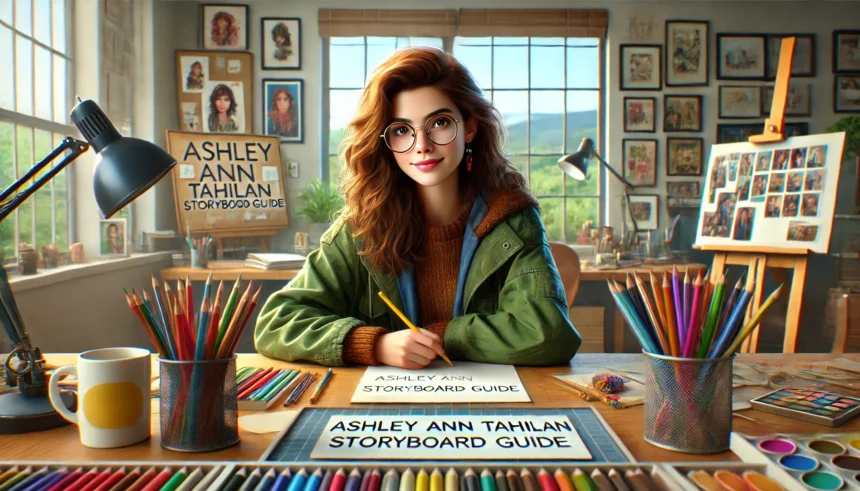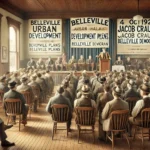Ashley Ann Tahilan is an influential storyboard artist known for her work on animated projects like Craig of the Creek and Home: Adventures of Tip & Oh. She has honed her skills in creating visually dynamic and engaging storyboards that effectively communicate a narrative.
Her approach to storyboarding is centered on clarity and creativity. She emphasizes the importance of telling a story visually, ensuring that every frame moves the plot forward. By incorporating distinct camera angles and character expressions, she crafts compelling visual narratives.
The Ashley Ann Tahilan storyboard guide is a great resource for both beginners and experienced artists. It provides insights on how to break down a story, use dynamic shots, and enhance character movements, making it essential for anyone interested in animation and film production.
Ashley Ann Tahilan Storyboard Guide
The Ashley Ann Tahilan storyboard guide provides essential techniques for creating compelling visual narratives in animation and film. It emphasizes clear storytelling through dynamic camera angles, expressive character movements, and effective pacing, ensuring that every scene supports the overall plot.
With a focus on practical tips like thumbnailing, scene planning, and adding detailed annotations, her guide helps artists streamline their workflow while maintaining creative flexibility. Whether you’re a beginner or an experienced animator, Tahilan’s approach ensures your storyboards are both visually dynamic and narratively strong.
Understanding Story Structure
In storyboarding, structure is the backbone of any narrative. The key is to divide the story into three main parts: the setup, conflict, and resolution. This ensures the audience can follow the story with ease.
A clear beginning sets the stage, introducing characters and the environment. The middle builds tension through conflict, and the end brings everything together with resolution. This simple structure makes the story easy to digest and impactful.
Ashley Ann Tahilan storyboard guide stresses that each frame should reflect the flow of the story, ensuring that every scene advances the plot. Breaking the story into smaller moments helps maintain pacing and clarity throughout the sequence.
Thumbnailing for Efficient Planning
Thumbnailing is the process of creating small, rough sketches to quickly explore scene compositions and camera angles. These thumbnails are not about perfection but about quickly visualizing how a shot will look.
In her guide, Ashley Ann Tahilan suggests focusing on the overall composition and emotion of the scene in these quick sketches. Thumbnailing saves time in the later stages of production and helps avoid large-scale changes after detailed work has been done.
Thumbnail Example:
| Scene | Composition Focus | Camera Angle | Emotion |
| 1 | Character Close-up | Low Angle | Tension |
| 2 | Wide Landscape | Overhead | Calm |
This approach allows for experimentation with camera angles, emotion, and pacing, ensuring the storyboard remains flexible.
Dynamic Camera Angles and Movements
Ashley Ann Tahilan emphasizes the importance of dynamic camera angles in storyboarding. Different camera angles can change how the viewer experiences a scene, adding emotional depth and energy.
For example, close-up shots capture intense emotions, while wide shots provide context and show the broader environment. She encourages experimenting with angles to convey the right feeling—whether it’s suspense, excitement, or calm.
Camera movements such as pans, tilts, or zooms are also vital in creating dynamic visuals. These movements help guide the viewer’s focus and maintain engagement throughout the scene. Each camera choice should serve the story, not just the visual aesthetics.
Expressive Characters and Body Language
One of the core aspects of Ashley Ann Tahilan’s storyboard guide is the depiction of expressive characters. She believes that a character’s body language is just as important as facial expressions in conveying their emotions and intentions.
Body language can convey a range of emotions from happiness to frustration. For example, slouched shoulders and crossed arms may indicate defeat or reluctance, while open body posture can show confidence.
By exaggerating these expressions in storyboards, Tahilan ensures that the audience instantly understands what the character is feeling, even without dialogue. This method helps strengthen the emotional impact of the scene, making it more relatable to viewers.
Scene Notes and Annotations
Adding scene notes and annotations is a crucial part of Ashley Ann Tahilan’s storyboarding process. These written instructions provide additional context to the visual elements, such as camera movements, sound effects, and transitions.
Annotations ensure that the entire production team understands the intended mood, timing, and technical details. These notes are especially helpful when there’s a need for complex action sequences or specific timing in a scene.
Including precise annotations also minimizes misunderstandings during the production phase, helping the animation team create a cohesive final product that aligns with the artist’s vision.
Application Across Different Industries
While Ashley Ann Tahilan’s storyboard guide is mainly focused on animation, its principles can be applied in various creative industries. From filmmaking to advertising and video game design, storyboarding is an essential tool in visual storytelling.
In advertising, for instance, storyboards help plan commercials by visualizing the sequence of events. In video game design, they are used to map out the narrative flow and interactive scenes.
By mastering storyboarding techniques, artists can contribute to projects across multiple fields, using their creativity to communicate visually in any medium.
Conclusion
The Ashley Ann Tahilan storyboard guide is a valuable resource for both new and experienced artists. By focusing on story structure, camera dynamics, character expressions, and efficient planning, it offers a comprehensive approach to creating engaging and visually appealing storyboards.
FAQs
What is Ashley Ann Tahilan’s storyboard guide?
Ashley Ann Tahilan’s storyboard guide offers a comprehensive approach to visual storytelling, focusing on structure, camera dynamics, and character expressions to create engaging scenes.
How does thumbnailing help in storyboarding?
Thumbnailing helps quickly visualize scenes, experiment with compositions, and plan camera angles, saving time and ensuring a smooth production process.
Why are dynamic camera angles important in storyboarding?
Dynamic camera angles add emotional depth and visual interest to scenes, helping convey specific moods and guiding the audience’s focus through the narrative.
How can body language enhance character expressions in storyboarding?
Exaggerated body language in storyboards conveys emotions and intentions clearly, allowing the audience to instantly understand a character’s feelings without relying on dialogue.
Can Ashley Ann Tahilan’s storyboard guide be used outside of animation?
Yes, her guide can be applied across various creative industries, including film, advertising, and video game design, where visual storytelling plays a key role.









